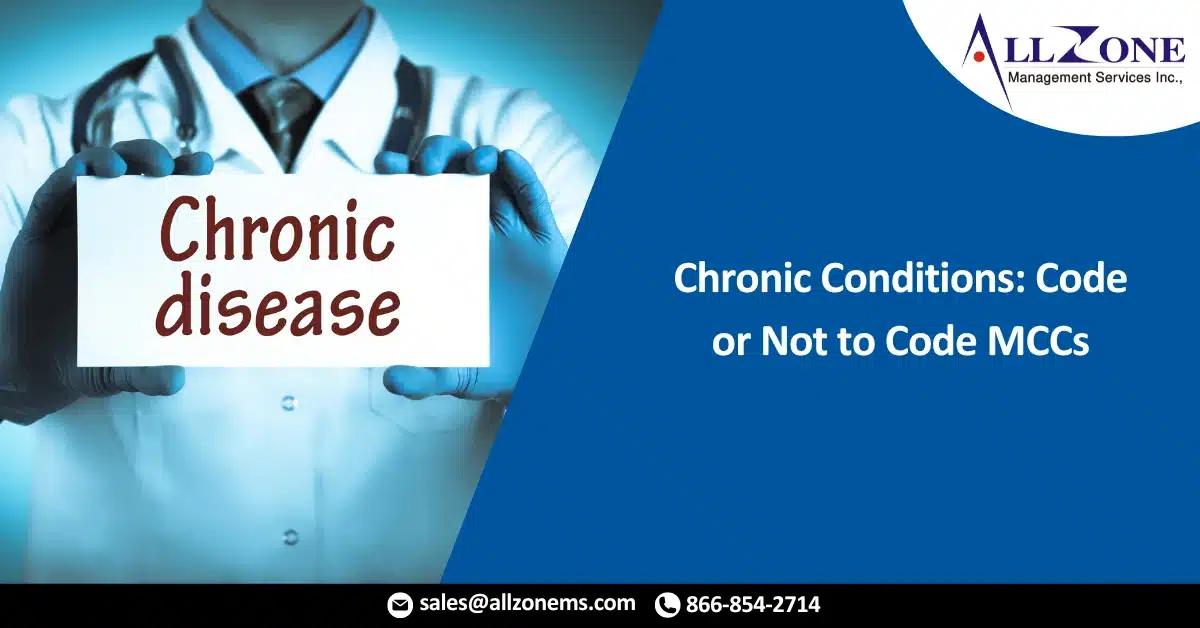Understanding the correct use of chronic condition codes in the coding process.
Unexpected and inaccurate medical bills can be alarming and shocking.
Coders are often confused regarding when they should code co-morbid chronic conditions and when they should not. This leads to inaccurate coding of levels, or sometimes missing out on the opportunity of stressing each patient’s true clinical conditions, which can make practices lose revenues and also shoulder increased administrative burdens.
Often, the coding process gets confused with the audit process. Forgotten in translation is the global picture of patient care and the reporting of each condition. Counting bullets, addressing overarching “medical necessity,” and identifying the nature of presenting problem are all issues dealt with in auditing a medical record, and that is where the true confusion comes into play.
Whenever coding or auditing for clinical documentation, it is important to have a thorough understanding of the work involved, as well as the thought process that goes into the diagnosing of a patient’s clinical condition. This allows for stronger, more effective communication with clinicians, and also gives you a more solid thought process when auditing. It also assists you in being able to interpret the information documented precisely enough to assign the most appropriate codes.
I have heard of confusion in the industry that leads coders to believe that they cannot code a co-morbid condition if the physician seeing the patient is not treating that condition. This simply is untrue. You want to make sure you code all conditions that influence the physician’s treatment plans or the complexity of the patient.
Keep in mind that most of us coding are not physicians. We cannot echo the physician’s thought process when determining what diagnosis codes for co-morbid conditions influenced medical treatment; we do not have the training or education necessary to understand the differential diagnoses.
For example, abdominal pain is one of the most common causes of admission or a leading reason for persons seeking healthcare treatment. According to surveys, it is the second-leading diagnosis for treatment and costs over $18 billion in healthcare treatment in the U.S. annually (Association for the Study of Pain, 2012). Final diagnoses from patients who present with abdominal pain symptoms can range from something as simple as constipation or irritable bowel disease to more complex, life-threatening conditions, such as ruptured abdominal aortic aneurysms. For a clinician, the beginning point for constructing a differential diagnosis is the location of the abdominal pain. Constructing a differential diagnosis, choosing diagnostic tests, and interpreting the results are key skills for all physicians.
The diagnostic process, often called clinical reasoning, is complex, but it can be broken down into a series of steps. These steps are not captured in the coding process. In addition, co-morbid conditions can also lead to complicating the diagnosing of the patient. These should be captured in the coding process, as they describe the complexity of the patient.
When working with clinicians on documentation, it is important to understand the key concepts of their basic thought process so that you are aware of everything they need to consider in constructing a differential diagnosis: this helps you understand medical necessity and the justification of the tests ordered and services provided for the patient. Talking the same language and being able to convey that you understand what they are doing will help you tie in conversations regarding the importance of complete documentation for compliance, and for demonstrating the complexity of the patient.
In traditional auditing, an auditor looks for documentation to support the levels assigned, and that is where the lines tend to blur. Counting bullets and adding up points is an administrative task attempting to justify the levels billed. It’s a flawed system, one in which we state frequently, “if it wasn’t documented…” Physicians do not document every single thought while with a patient while they determine the differential diagnoses or complexities of the patient. If they did, we would have 10 pages of office visit documentation.
But in the coding process, we need to make sure we include those co-morbid conditions that truly spell out the clinical complexity of the patient. It depicts the complete patient journey. You will want to work with your physicians on documenting how the co-morbid conditions affect the condition they are treating to assist in the coding process and to help in the auditing process as well.
Remember that we are moving towards population health, and we can only do this once good data is achieved. Part of that is portraying the true patient clinical experience and their treatment path along the way.
Coding of co-morbid conditions helps us paint that picture and supply the data necessary.
For More Information: https://www.icd10monitor.com/chronic-conditions-code-or-not-to-code-mccs

